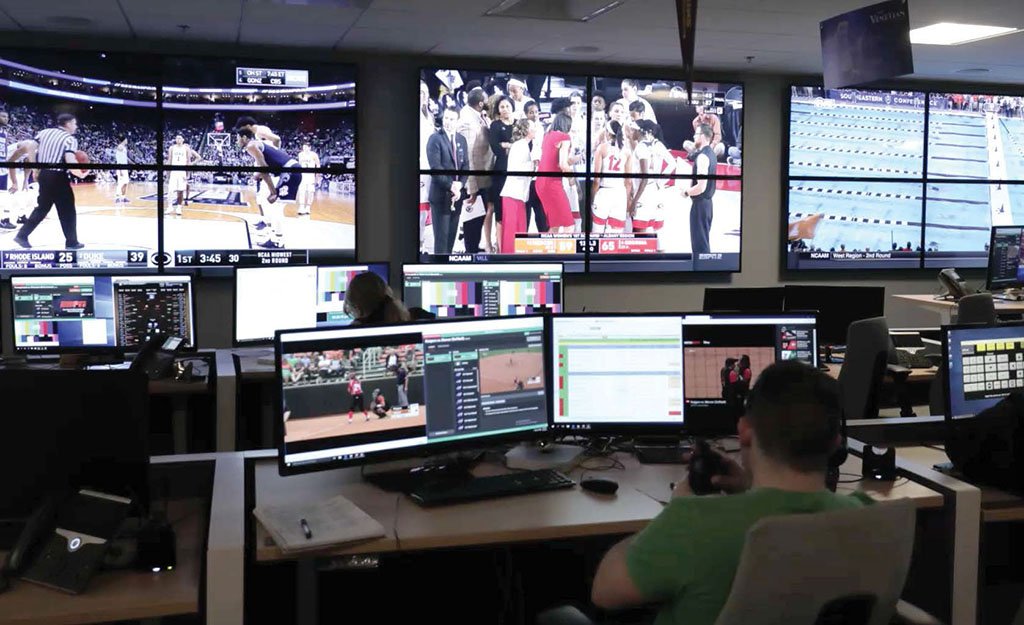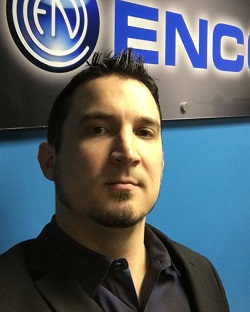‘More Than Just Logging’
NEW YORK—Compliance monitoring has evolved over the past decade from simple broadcast logging to what is now a much broader range of applications that encompass monitoring, analysis and even revenue-generating functions for broadcasters, OTT providers and MVPD operators. Today’s digital tools have largely replaced the VHS long-play tape recorders to log transmissions, and other new technologies promise to only increase how broadcasters and others can utilize and even monetize what was once just compliance monitoring.

“The need for compliance loggers comes from the legal requirement to log all broadcasted content,” said Ken Frommert, president of ENCO, a Southfield, Mich.-based provider of broadcast technology systems. “This need, arising from the national telecom regulators, such as the FCC, did not change. However, the ever-increasing economic pressure on the same broadcasters, coupled with the fact the compliance loggers are an economic liability with no real business benefit, will necessarily force a technological evolution that will change the loggers into becoming economically beneficial.”
FROM BROADCAST TO OTT
Compliance monitoring is now at a massive transformational stage.
“To start, while compliance services have their roots in traditional broadcasting, we’re seeing the need for compliance services to not only cover broadcast, but also OTT content,” said Ariff Sidi, chief product officer for content delivery network provider Verizon Digital Media Services. “An increasing number of services now offer the ability to monitor OTT streams, and that trend will continue this year and beyond. We’ll see monitoring capabilities enhanced to cover the full path—from ingestion to delivery and through to the end user experience as well. Second, there will continue to be a major shift from compliance monitoring services being hardware-based to cloud-based.”
Even traditional compliance monitoring is now changing in terms of the content being monitored, the level of detail and even how long to store the results. Much of this wouldn’t have been possible just a few years ago.
“A simple studio-based ‘Air Recorder’ at the output of master control, keeping recordings for 30-90 days is insufficient,” said Ted Korte, COO of Qligent, a Melbourne, Fla.-based developer of broadcast monitoring and QoE technology. “More and more functions are either being outsourced or moved closer to the end user, and so should compliance monitoring. Having a number of monitoring points covering each of the delivery platforms, is a much more accurate representation of an audience and thus creates a more comprehensive compliance verification. Since new regulations are likely to evolve it is also a good practice to record all the associated metadata with the media and to record everything for extended periods of time to allow post verification analysis and audits.”
The professional video industry's #1 source for news, trends and product and tech information. Sign up below.
ORIGINS IN CALM
One of the key components of compliance monitoring is that audio levels are consistent as required by the Commercial Advertisement Loudness Mitigation (CALM) Act, which barred TV commercials—as well as other content—from increasing in volume at commercial breaks. Since the introduction of CALM it has been mostly “all quiet” on the audio front as broadcasters have mostly complied, but new technologies would bring up similar issues.
“Commercial loudness has been an issue since the 1980s, but finally modern audio systems really made it noticeable,” said William T. Hayes, director of engineering for Iowa Public Television and president of the IEEE Broadcast Technology Society. “Today the issue is how people consume content in other ways, and these services don’t follow the rules set in place by CALM. The major streaming services such as Netflix and Amazon Video are pretty good, but then you can instantly tell that YouTube videos and others aren’t CALM-compliant.”
For audio compliance, self-regulation could be one solution, but new technology at the consumer level might also solve the issue.
“The reality is that everyone who has a service that provides video and audio knows they need to do something,” Hayes added. “But self-regulating may not solve all the issues. However, smart TVs could be made to automatically adjust volume to a consistent level.”
FULL STREAM AHEAD
In a recently released white paper, Mediaproxy, a provider of compliance, monitoring and analysis technology noted that as the industry has to deal with an increasing number of transmission platforms that span from traditional broadcasts to OTT logging and monitoring paradigms have also shifted.
“It’s become apparent that with an increase in scale, the tools have to extend in versatility. Making sure that the right content is transmitted at the right place and time across the different outputs is paramount. Loggers are hence expected to have advanced video analysis features like content and source matching” said Erik Otto, Mediaproxy president. "However, this also means that OTT providers will have to address challenges, as streaming doesn’t fit in very well with traditional compliance monitoring."
“Linear and nonlinear streaming is very different as to how it is delivered and consumed, making end-to-end visibility and control much more complex,” said Korte at Qligent. “Streaming is changing all the usual points of reference such as primetime, demographics, DMAs, and even the definition of ‘live’.’’ All this new technology and opportunity will also invite new regulations regarding privacy and data protection [end users], fraud [i.e. advertising], piracy [i.e. rights], ratings [social media], etc. from multiple government agencies as well as vendor/service provider SLAs.”
Yet, unlike in a traditional broadcast, which typically has one version of content delivered to all viewers and with differences often the result of local market requirements, OTT could enable content providers to deliver innumerable discrete streams delivered to users—differentiated by region, device, preference or other factors.
“This same ‘one-to-one’ approach can be applied to compliance monitoring systems, too,” added Sidi. “In addition to monitoring the entire cloud workflow, it can check streams by region or other critical factors.”
The downside for content providers is that these opportunities could require more work.
“Budgets haven’t gone up,” and companies are not hiring replacements when employees leave, according to Hiren Hindocha, CEO of Digital Nirvana. “However today’s new compliance monitoring tools can address those requirements.”
AI AND MACHINE LEARNING
Technology could certainly play a major role in this evolution of monitoring and logging, and could take advantage of artificial intelligence or machine learning, which could more easily manage the influx of “Big Data” that is created at a near constant rate.

“The big trend is mixing technical compliance with content compliance,” said ENCO’s Frommert. “The way we see things, the loggers are producing enormous amounts of video data. This ‘Big Data’ is just sitting there for months until it is deleted and replaced by newer data, with no effective use. The use of Big Data technologies is gradually enriching the value of these video records and adding a number of useful functions.”
This, in turn could change compliance monitoring from something required and which can be costly, into a potential revenue stream instead.
Compliance tools are required by law, and thus become an expense for broadcasters, Hayes said, who added that today, AI can turn compliance into a value add instead.
“AI can analyze your audio for CALM compliance, but could also make it easier to ensure that closed captioning makes sense, including that the right version of a word is used. But it can also turn it into a profit center as it becomes a service, whether that is a tool for viewers to find content, or for those in commercial broadcasting so that advertisers and vendors can track their results.”
This could include automated detection of commercial ad spots, which could replace what has been a manually intensive work.
“This technology [AI] can scan many channels and provide very accurate affidavit reports on the number of ad spots,” added Frommert. “Similarly, the ads watching technology can also analyze competing channels and provide comparisons channel to channel on the number of ads sold and aired.”
AI could further automatically create captions and subtitles via speech recognition technology, while also utilizing rich metadata for searching and organizing the vast archives of video, which are stored on-premise or in the cloud.
“This can make it easier for people to find the content they want, as it is needs to be available to whomsoever, whenever they want it,” said Hindocha. “Metadata is really ripe for AI and machine learning, as it can help the viewer decide whether they want to consume that content. Metadata, as a side of the logging, helps you slice and dice the variety of content that is out there.”
